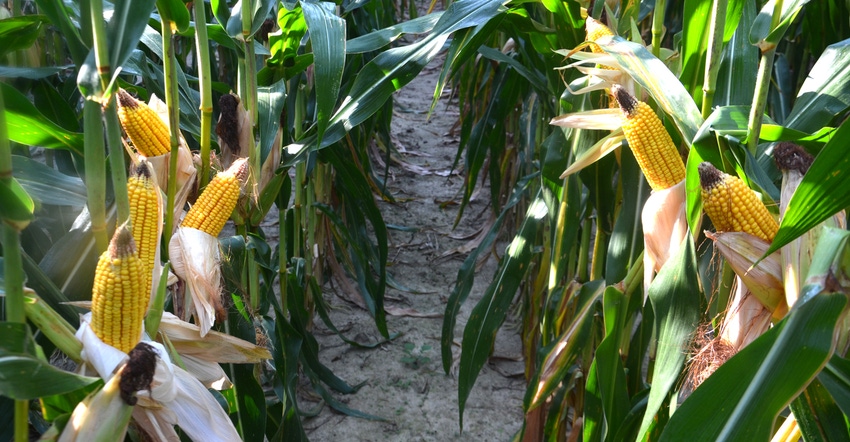October 27, 2020

Those who scout crops learn new lessons every year. Here are lessons I learned or was reminded about in 2020. Some came from visiting the Corn Watch ’20 field in central Indiana. I also asked some farmers and seed industry officials for their input.
This season was another reminder about how corn plants grow and react to their macro- and microclimates. Each plant tries its best to produce the maximum number of fully developed kernels as progeny. Humans could learn a lot about maximizing their output in their environment from plants.
1. Planting date. Every year has wrong days to plant. The Corn Watch ’20 field was planted on the front edge of a poor three- to four-day stretch. You can’t predict the future, so you must plant when you can and hope for the best.
2. Tree lines. The Corn Watch field was planted near trees. It made the case for not planting 12 rows around trees, even on rented land — save your money!
3. Wildlife damage. Deer and other wildlife damage seemed excessive this year. We saw that it can extend farther into a field than you’d think, as much as 60 rows or 120 feet.
4. Field borders. Some counties have offered field border practices with cost share in the past. If your county does, it would be a wise investment.
5. Human soil compaction. Even a grown man walking in mud to flag plants as they emerge can cause compaction! In the Corn Watch field, this created a visible difference in plant stress in midseason during a dry spell.
6. Weather and soil compaction. Rain and wet weather may remove soil compaction symptoms temporarily. Compacted areas still show up later if stress returns.
7. Kernel abortion. You don’t need severe dry weather to get kernel abortion. We saw it in fields with overall adequate rainfall. Timing on when it is hot and dry matters.
8. Emergence and plant spacing. Uniform emergence matters, but plant spacing may matter as much or more. Even some plants that emerge on time struggle occasionally. Reasons aren’t always obvious.
9. Hybrid differences. When you plant hybrids side by side, it’s easy to spot differences. We found nine distinct different characteristics between the two hybrids in the Corn Watch field.
10. Heat unit accumulation. This was the main reason for fields making maturity on time this year versus late maturity in 2019. Planting dates were only two weeks earlier in 2020.
11. Smut garden. Wildlife feeding opens wounds on cornstalks and leaves, which allow pathogenic fungi like smut to create what looks like “smut gardens.” They don’t have big effects on yield, but they look unsightly and add disease inoculum in the field.
12. Spot in weak stands. This year proved again that spotting corn in is questionable unless there are 2 to 3 acres of very thin stands.
13. Tissue testing. This can give insights into what plants need, but unless you irrigate, the biggest benefit may be planning for the next season.
14. Secondary and micronutrients. Even if you apply sulfur and zinc, they could still show up low in tissue tests. Do you need to apply more or apply differently?
15. Seeding rates. Consider pushing seeding rates by 2,000 to 4,000 seeds per acre to get high enough population to go for higher yields.
Nanda is director of genetics for Seed Genetics Direct, Jeffersonville, Ohio. Email [email protected] or call 317-910-9876.
About the Author(s)
You May Also Like






